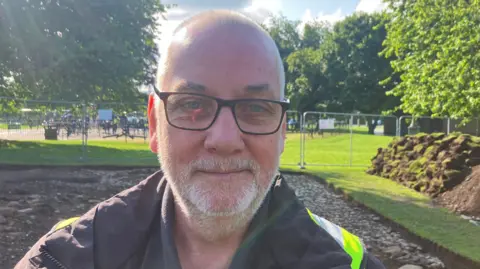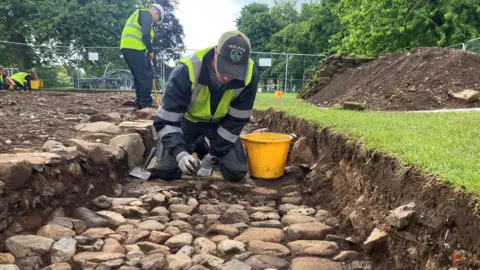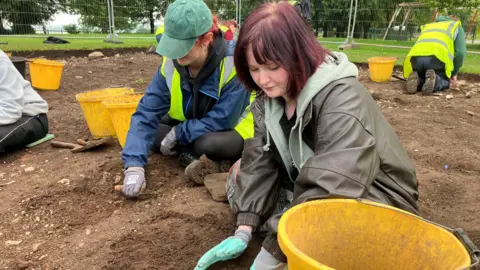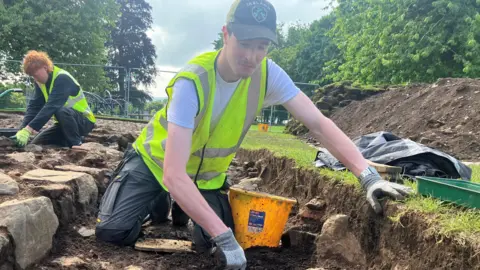Castle under village park could date to 17th century
 BBC
BBCArchaeologists believe they have found the remains of a castle in a public park in Moira - but works are ongoing to uncover whether it dates from the 1800s or is an earlier structure built in the 1650s.
The park in the County Down village is owned by Lisburn and Castlereagh City Council but 250 years ago it was part of an estate belonging to the earl of Moira.
Maps show a house was built on the site in the 17th century, revamped in the 18th century and demolished in the early 19th century.
The ongoing excavation is being supported by the Community Archaeology Programme NI (CAPNI) and the National Lottery Heritage Fund.

Ruairí Ó Baoill an archaeologist with the Centre for Community Archaeology at Queen's University Belfast, said it was possible the findings included both castles.
"What we're seeing are the walls of buildings and the cobbled surfaces around them," he said.
"They probably date to the 18th century. The buildings themselves were demolished in the early 1800s - so we are trying to find out if they are part of the 18th century Moira castle demesne or are they from the earlier castle that was built in the 1650s."
This is the second dig at the site, with a smaller excavation taking place in 2019.
Back then the team found a ditch dated to the late bronze age "maybe two and a half thousand years ago", he said.
"But 10cm below our feet we're going back 250 years."
This year's dig only began a week ago and will continue until the end of the month.
It is hoped artefacts from three different eras will be uncovered.
On site every day are first year archaeology students at Queen's University Belfast, while pupils from a host of local schools are also taking part.

Aoife Lynch, a first year archaeology student at Queens University Belfast, is taking part in her first ever dig.
So far she has found two floor tiles, which are yet to be dated.
She is confident they are old due to the "red clay" at their centre.

Arthur Redfern from Essex is a first year archaeology student at Queen's University.
He said the key to trowelling was to "keep shovelling the muck back and try not to look behind you at how much you have left to do".
"It's so satisfying seeing it all unearth itself in front of your eyes," he said.
Among the school groups coming to the site are St Patrick's Academy from Lisburn.
Year 10 student Amy, who is hoping for a career in archaeology, said she loved activities like the dig in Moira.
"It's interesting as most people wouldn't realise there could be something here," she said.
Year 10 pupils Neil and Eoghan's dream find is gold.
But in the absence of that they are enjoying the fieldwork.
"It is definitely more interesting being out here doing this," said Neil.
As well as the cobbles and walls, the team have found slates, pottery and coins.
All items will be studied to ascertain their date.
When the dig is over hundreds of sods will carefully cover the structure which will once again be hidden from view but will have offered up a greater understanding of what lies beneath.
